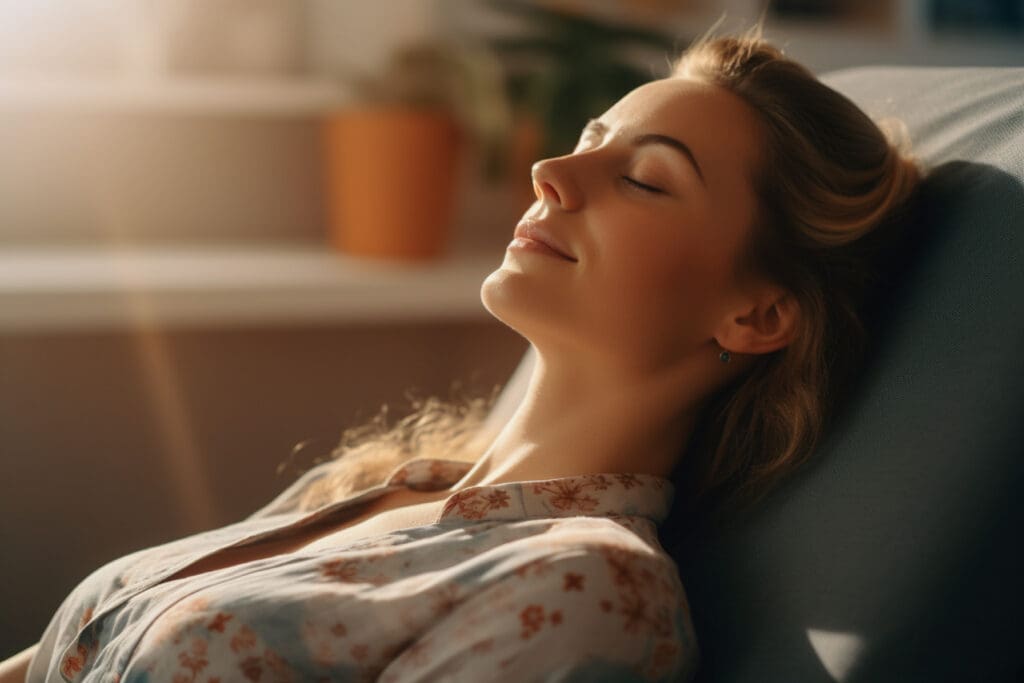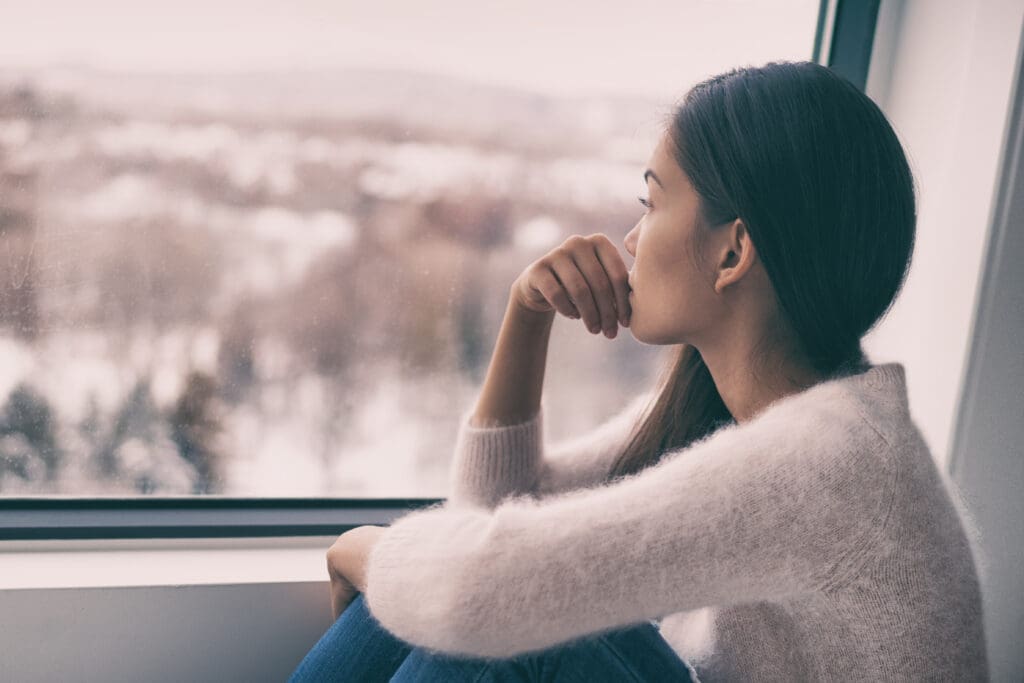
Introduction to Art Therapy for Mental Health
Art therapy is a unique and transformative approach that can help individuals unlock their creative healing potential. But how do you get the right art therapy for mental health?
In this article, we’ll be exploring the history and science of art therapy to discover a range of techniques. This will empower you to find your perfect blend of artistic expression and healing.
What is Art Therapy?
Art therapy is a type of therapy that uses various forms of art as a means of expression. It helps individuals living with mental health conditions. It is a creative process that involves using different art materials such as paint, clay, and paper to express emotions and feelings that may be difficult to put into words.
How Does It Work?
The art therapist works with the client to explore the underlying issues that may be causing their mental health concerns. Some include depression, anxiety, trauma, or grief.
The therapist helps clients identify and express their emotions and feelings through art-making. This can help them to gain insights into their thoughts and behaviors.
How Does It Work as a Form of Treatment for Mental Health?
Art therapy for mental health works by engaging the brain creatively. It allows individuals to express themselves in a nonverbal way.
It can be beneficial for those with difficulty communicating their feelings verbally. They may have autism, dementia, or other communication disorders.
It can also benefit individuals who have experienced trauma. It provides a safe and non-threatening way to explore and express difficult emotions.
What are the Benefits of Art Therapy?
The therapeutic benefits of art therapy are numerous. Art therapy can help individuals:
- Reduce stress
- Improve self-esteem
- Develop coping skills
- Enhance communication and social skills
- Improve mood
- Decrease symptoms of depression and anxiety
Art therapy for mental health utilizes the creative art-making process to help individuals express their emotions and feelings.
The benefits of art therapy for mental health are numerous. They can be a valuable tool in helping individuals improve their mental health and well-being.
What Types of Mental Health Conditions can be Treated Through Art Therapy?
Art therapy for mental health can treat a wide range of mental health conditions. It is a versatile therapy that can be tailored to meet the needs of each individual.
Some of the mental health conditions that can be treated through art therapy are detailed below.
Depression
Art therapy can help individuals with depression. It provides a creative outlet for expressing their feelings and emotions.
The process of creating art can help individuals to reduce stress and improve their mood.
Anxiety
Art therapy can be an effective treatment for anxiety. It helps individuals to express their worries and fears through art. It can also help to reduce stress and promote relaxation.
Post-Traumatic Stress Disorder (PTSD)
Art therapy can be helpful for individuals with PTSD by providing a safe and non-threatening way to explore and express difficult emotions related to their traumatic experiences.
Autism Spectrum Disorder (ASD)
Art therapy can benefit individuals with ASD. It provides a way to communicate and express themselves through art. It can also help to improve social skills and promote self-esteem.
Eating Disorders
Art therapy can be helpful for individuals with eating disorders. It provides a way to explore their relationship with food and body image. They do so in a safe and non-judgmental environment.
Substance Use Disorders
Art therapy can be a complementary treatment for individuals with substance use disorders.
It can help individuals to express their emotions and experiences related to addiction and recovery.
Schizophrenia
Art therapy can be used to help individuals with schizophrenia. It provides a way to express their thoughts and emotions that may be difficult to communicate verbally.
How Does Creating Art Support the Therapeutic Process in Art Therapy?
Creating art is a central part of the therapeutic process in art therapy. It provides a means of expression and communication.
It can help individuals to explore and understand their thoughts and emotions.
Creating art can also promote relaxation and reduce stress. So, it is helpful for individuals dealing with mental health concerns.
The Role of Creativity in the Therapeutic Process
One of the critical benefits of art therapy is creativity’s role in the therapeutic process.
Creativity is an essential aspect of art therapy. It encourages individuals to think outside the box and approach problems in new and different ways.
This can be particularly beneficial for individuals stuck in negative thought patterns. It also helps people struggling with feelings of hopelessness and despair.
Taps into the Subconscious
In art therapy, creativity helps individuals explore and express their innermost thoughts and emotions.
By engaging in the creative process, individuals can tap into their subconscious. They access thoughts and feelings that may be difficult to express through words alone.
This can help individuals gain insights into their thoughts and behaviors. They learn to develop new coping strategies.
Builds Self Esteem
Additionally, creativity in art therapy can help individuals to build self-esteem and confidence. Creating something unique and personal gives you a sense of accomplishment. This can be particularly helpful for individuals with low self-esteem or who are struggling with feelings of inadequacy.
Overall, art therapy for mental health supports the therapeutic process in several ways. It provides a safe and non-threatening way for individuals to express themselves. This can be particularly beneficial for those struggling with mental health concerns.
What Are the Potential Benefits of Art Therapy for Mental Health?
Art therapy for mental health has been shown to have many potential benefits. Some of the benefits of art therapy for mental health are detailed below.
Improved Mood
Engaging in the creative art-making process can promote relaxation and reduce stress. This leads to improved mood and a greater sense of well-being.
Enhanced Self-Esteem
Creating art can provide a sense of accomplishment and boost self-esteem. This can be particularly beneficial for individuals with low self-esteem.
Increased Self-Awareness
Art therapy can help individuals to gain insight into their thoughts, emotions, and behaviors. They develop increased self-awareness and a greater sense of self-understanding.
Improved Communication Skills
Art therapy provides a safe and non-judgmental space for individuals to express themselves. It helps to improve communication skills. It also helps individuals to articulate their thoughts and emotions better.
Reduced Symptoms of Mental Health Conditions
Art therapy effectively reduces symptoms of various mental health conditions. Some include:
- Depression
- Anxiety
- PTSD
- Schizophrenia
How Effective Is Art Therapy for Mental Health Compared to Other Forms of Treatment?
Art therapy for mental health is as effective as other forms of therapy in treating mental health conditions. It is as effective as talk therapy. However, the effectiveness of art therapy may depend on individual factors. Some factors include:
- The type of mental health condition being treated
- The preferences and needs of the individual receiving treatment
Effective as a Complementary Treatment
Art therapy is often used as a complementary treatment alongside other forms of therapy. It is also used with medication and lifestyle changes. It can also be used as a standalone treatment. It all depends on the individual’s needs.
The success of art therapy may also depend on the following:
- The skills and experience of the therapist
- The individual’s willingness to engage in the therapy process
Art Therapy is Overall Beneficial
Overall, art therapy for mental health is very beneficial. It can be an effective form of treatment for a range of mental health conditions.
As with any form of therapy, the effectiveness of art therapy may vary depending on individual factors. It is essential to work with a qualified mental health professional. They will determine the best treatment for your specific needs.
What Should Someone Expect During a Typical Session?
Art therapy uses creative expression to promote emotional, cognitive, and social well-being. Art therapy sessions are typically structured to allow individuals to explore their thoughts and emotions through art creation. They do so with the guidance and support of a trained art therapist.
Therapist Overview
During a typical art therapy session, the therapist will provide a brief overview of the session. They will ask the individual how they are feeling.
This can help the therapist better understand the individual’s current emotional state. Then, they can guide the session accordingly.
Therapist Provides Materials
The therapist will then typically provide materials for the individual to create art. They may provide paints, markers, or clay. The individual may be asked to create a specific type of artwork. They may also be given the freedom to create whatever they choose.
During Art Therapy Itself
Throughout the session, the therapist will encourage the individual to express themselves through their art. They may ask open-ended questions to help facilitate this process. The therapist may also provide feedback on the individual’s artwork and ask questions to help the individual explore their thoughts and emotions.
Wrap-Up and Reflection
As the session ends, the therapist may ask the individual to reflect on their artwork and how it relates to their current emotional state.
They may also discuss potential ways to continue exploring these emotions outside of the therapy session.
Varying Structures of Art Therapy
It is important to note that the structure of art therapy sessions may vary depending on the individual’s needs and the therapist’s approach. Some art therapists may focus more on the creative process. Meanwhile, others may use art to explore specific thoughts and emotions. Additionally, the materials used may vary depending on the individual’s preferences.
What Types Of Art Materials Are Typically Used In Art Therapy? How Do They Differ From Traditional Art Materials?
Art therapy typically uses various art materials. They include:
- Paints
- Markers
- Pencils
- Clay
- Collage materials
These materials are chosen for their versatility and accessibility. They are often non-toxic and safe for individuals of all ages to use.
Focus on the Process
While traditional art materials may be used in art therapy, the focus is less on creating a finished product. It is more about the process of creating and expressing oneself.
As a result, art therapy materials may be used more experimentally and exploratory.
How Art Materials are Chosen
Additionally, art materials in art therapy are often chosen based on their sensory properties. These include texture, color, and shape. These sensory properties can help individuals to connect with their emotions. They express themselves more intuitively and viscerally.The art materials used in art therapy for mental health are chosen based on their ability to facilitate the therapeutic process. They help individuals to explore their thoughts and emotions through creative expression.
How Can Someone Determine if Art Therapy is the Right Approach for Them? What Should They Look For in an Art Therapist?
Do you want to determine if art therapy for mental health is right for you? It can be a complex process. It involves a thorough mental health professional assessment. However, there are some general factors to consider when deciding whether art therapy is beneficial.
The Feeling of Creative Expression
It is important to consider how creative expression feels. Does it feel comfortable to explore and express one’s thoughts and emotions?
Individuals who enjoy and feel comfortable with art and other creative pursuits may be more likely to benefit from art therapy for mental health.
Openness to Exploring Emotions
It is essential to consider whether the individual is open to exploring their emotions and thoughts, especially in a therapeutic setting. Art therapy for mental health involves exploring sensitive or complex emotions. Individuals open to this type of exploration are more likely to benefit.
Choosing an Art Therapist
When looking for an art therapist, looking for someone trained and certified in art therapy is essential. A qualified art therapist should have completed a graduate-level art therapy program. They should be licensed or registered to practice in their state.Looking for an art therapist with experience working with individuals with similar needs and concerns is also essential. Ultimately, the decision to pursue art therapy should be made in consultation with a mental health professional. They can help to assess the individual’s needs and determine the most appropriate course of treatment.

How Can True Life Care Center Help?
True Life Care is a treatment facility that services individuals with addiction and mental health conditions.
One of the services we offer is art therapy for mental health. It can be an effective tool for individuals in recovery.
Structure of Art Therapy
Art therapy at True Life Care is typically structured as a group therapy session. Individuals are guided through various art-based activities. They are encouraged to explore their thoughts and emotions through creative expression. Art therapy for mental health aims to help individuals gain insight into their feelings and experiences. They develop coping skills to manage their addiction and mental health concerns.
Materials and Techniques
Art therapy at True Life Care rehab center may involve a variety of art materials and techniques. They include painting, drawing, sculpture, and collage.
The focus is less on creating a finished product and more on creating and expressing oneself.
Contact True Life Care Today
Art therapy for mental health can be valuable to a comprehensive treatment plan at True Life Care. We help individuals develop self-awareness, emotional regulation, and coping skills.
Reach out to True Life Care today for more information about our available treatment options. Please contact our admission office for more informations about our art therapy for mental health in New Jersey.
Resources
- https://pubmed.ncbi.nlm.nih.gov/31747178/
- https://pubmed.ncbi.nlm.nih.gov/34456801/
- https://www.sciencedirect.com/science/article/abs/pii/S0197455615000696
- https://pubmed.ncbi.nlm.nih.gov/36895711/
- https://pubmed.ncbi.nlm.nih.gov/36895711/
- https://baat.org/art-therapy/
- https://www.frontiersin.org/articles/10.3389/fpsyg.2021.686005/full
















